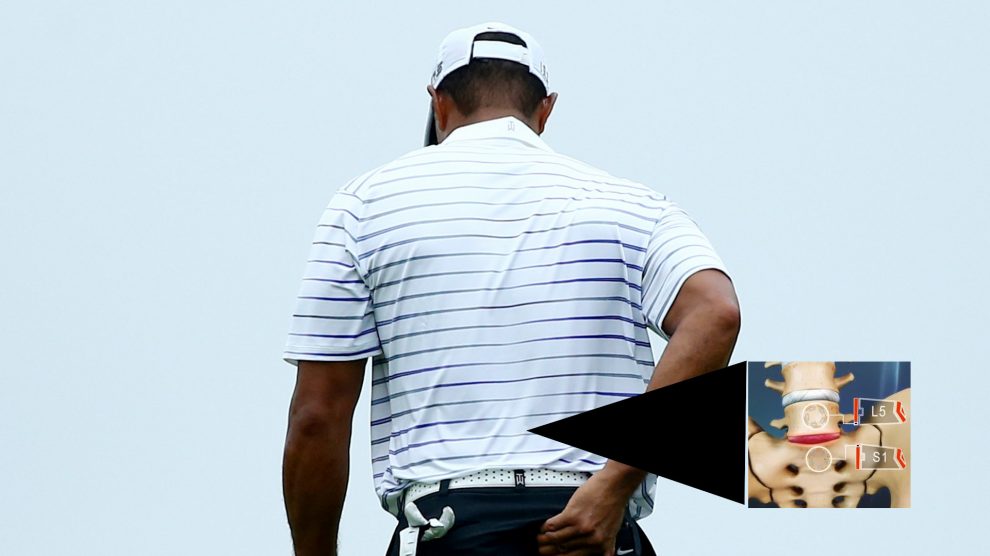Why did Tiger Woods become an increasingly erratic ball striker? And why is he injured so frequently?
To the first question, quite simply, Woods has had four golf swing coaches since becoming a professional golfer, and surely all a “swing coach” does is suggest swing changes.
The learning of a new movement or even the factoring in of a seemingly small change, alters the configuration of other body parts, and thus involves the learning of a new movement or skill. A 2008 book titled “Dynamics of Skill Acquisition: A Constraints Led Approach” by Davids, Button and Bennett, is an excellent book which can tell us how easy (or otherwise) it is to make movement (in this case golf swing) changes, and how lasting the effect will be.
First, this book is based on modern motor learning concepts which involve chaos, complexity and even disorder. In simple terms, the Davids, et al, book tells us that no two movements are ever identical and change based on the circumstances of each repetition. The technical word for “circumstances” is “constraints,” which can be of three types -“organismic,” “task” or “environmental”. Thus every golf swing a person makes will be slightly different, based on his/her individual state (mental and physical condition of the moment), the task involved (driver off a tee versus 52.5 yard approach shot with a wedge, for example) and the environment (the slope of the ground under the ball or the wind condition, for instance).
Thus, variability within movement has been considered a good thing in recent times because that is what allows the body to perform well despite changing constraints and also because not repeating the exact move every time prevents the same body parts being loaded repeatedly, thus delaying injury. However, in “goal-directed movement,” where it is important to connect a bat or racket or club to a ball, it is important for variability to be the least at the time of impact. In golf too, one study (by Betzler, Monk, Wallace, & Otto, 2012) has shown that skilled golfers demonstrate reduced variability closer to club-ball contact, with respect to clubhead speed, attack angle, path, face angle, efficiency (ratio of ball speed to clubhead speed) and impact location (of the ball on the club face).
In Tiger’s case, he made several changes and expected to put them into play in an increasingly short amount of time over the last few years. Even though he may have developed some “attractors” or coordination patterns during practice, he was not able to put them into effect adequately during play, when he often regressed to his earlier movement.
Why might this have happened? Even though it is easy for someone of Tiger Woods’ golf skill level to have a “positive transfer” from the old swing to any new one that his coach recommends, the new positions can easily fall apart because, according to the Davids, et al, book, even highly skilled performers switch back to the movements seen in novice players, if those movement patterns are more suitable for the constraints or circumstances of a particular swing. The circumstances include those when greater precision is required or in situations of anxiety when muscle tension increases. It is known that in the early stages of learning, people tend to freeze up the many degrees of freedom (directions of joint movements) available to the body in order to produce the reduced variability that is essential for impact.
The modern belief is that not all movement patterns are stored in the brain for retrieval at the correct time. Only the more basic or fundamental movement patterns (such as gripping, hitting, intercepting, stepping, postural control, balance and locomotion) are formed into coordination patterns, earlier in life, and then they are modified according to the constraints of a particular movement. However, which fundamental movement patterns directly relate to the side-to-side plus up-and-down plus rotation of the torso along with a different movement of the arms and club, all of which must be perfectly sequenced in time for an impact which takes place way down on the ground?
Picture this: a person sits on a bucking horse that moves him up and down, side-to-side and round and about. While that is happening, he must lean down sideways to connect a small ball, on the ground, with an implement with an angled face. While using both hands! Don’t you agree that the likelihood of contact would be greater if the horse were a statue instead? Especially keeping in mind that all downswing movement must be completed in the mere 0.27 to 0.34 seconds that research tells us any golf downswing lasts?
So, what can a golfer do who needs to hit the ball with greater consistency as well as, if possible, greater ball speed and better direction? Find a swing with much less whole-body movement during the downswing (no bucking bronc movement please) so that the arms cannot help but deliver the club to the right spot on the ground. Also, the differentness of the new set-up of such a swing should be able to trigger the new backswing, so that there is no confusion, even under conditions of anxiety or fatigue. And such a swing actually exists, just use it, or develop one of your own with the given requirements.
Kiran Kanwar teaches golf swing mechanics and is a full-time doctoral student studying human movement and researching the golf swing, in the hope of unraveling, with irrefutable science, the many mysteries surrounding it.

